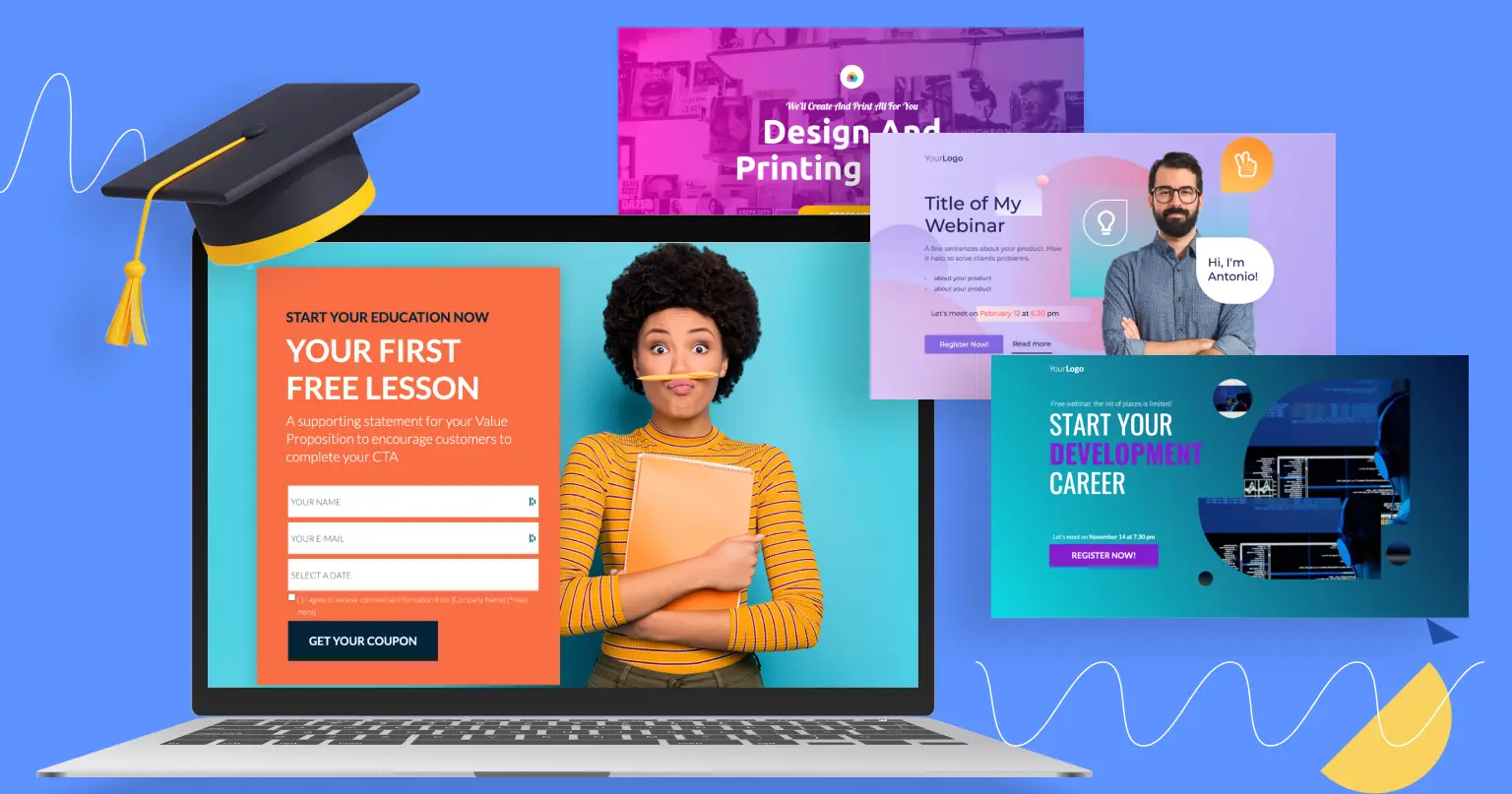
Running the best-optimized Google Ad for your business but still not getting good results?
Perhaps, the solution to this – It’s not your Paid Ad, but what comes after you click it, aka, The Landing Page!
Now, What’s a Landing Page?

Now think of it this way- The landing page portrays the “Grand Entrance” to your brand website.
So, if an interested visitor arrives at the “entrance” from your Google Ad but finds no clear directions to your proposed ad promise, how are you going to convert your visitor? If anything, you will risk losing potential customers!
Hence, as a marketer, besides focusing on SEO strategies to rank up your Google Ad’s Visibility, you must equally invest in designing a great landing page- to retain your visitor’s “Interest”!
So, today on this blog, we bring you a list of “must-know” Google landing page best practices to help you gain the max out of your paid ad PPC campaigns!
Top 10 Tips To Create Landing Page To Win Google Ads
1. Eye-Catching Primary Headline relevant to the ad
The headline is usually the first text content visitors see on arriving at your landing page- so you must use a powerful, catchy headline that instantly grabs your viewer’s attention!
That is because, on average, eight out of ten people bother ONLY to glance over the headline, whereas just two out of the ten will then read the follow-up content.
Hence, to nail that first impression, keep your Primary Headline such that it is:
- Short and Concise (Optimum length- Ten words)
- Relevant to your ad promise
- Clearly tells visitors what they will get.
An excellent tip to improve your headlines is to contain an emotional tone.
By painting the picture of a brighter future- you can engage with your visitors by creating headlines that “speak” to your audience.
2. Keeping the page content focused and precise
Don’t overwhelm your visitors with too much information!
Avoid using too elaborate or huge chunks of text- because chances are none simply has the time to go through it all!
So, what you can do is – Lay out your content so that it has-
- An eye-catching Title Headline.
- A supportive sub-headline for a brief context. (about you or your promised service)
- The Copy is preferably arranged in short bullet points.
- Content specific to visitor’s search intention.
- Content Specific to your PPC Ad promise.
Help your visitors get enough information instantaneously so that they can easily decide if they want to contact/enquire you further about services.
3. Have a visible, strong CTA (Call to Action)
The point of landing pages is to convince your visitors to avail of your promised ad service.
So, whether you are trying to influence your customers to buy a product, download, submit a form, etc- Focus your visitor’s attention to help them take that “One Action” without any distractions.
Lay out your landing page so that the “Call to Action” stands out and is upfront and visible to your visitor. Make use of bold visual elements to make that CTA button pop.
4. Visual Layout
Did you know that on average, it takes only about 0.05 seconds to create a first impression of your page?
Yes! So, Give people what they want right away- don’t have them scroll the entire landing page to find out your ad intent and CTA.
A good landing page layout consists of-
- A clear headline
- Laying out your content in proper dimensions (for easy readability on any device)
- Use colors and designs that are soothing to the eye and align with your original brand look.
- Eye-catching CTA button.
- High-quality image banners- to humanize and represent your brand visually.
The key is to Have your visitors feel that they are exactly where they are meant to be- so that, making that desired action feels like a smooth sail for your customer.
5. Optimize your landing page for multiple devices!
Content appears differently based on whether you are using a Horizontal screen orientation ( Desktop/Tablet) or a vertical orientation ( phone). What might seem easy to view on a desktop screen might be too small/difficult to read on a mobile screen.
So, it is important to adhere to a proper layout dimension so our landing page is easily readable and navigable, regardless of any device.
As a general rule, for a desktop landing page, we recommend sticking to a 700-800 pixel width size, and around 320 pixels for smartphone devices.
6. Fast Loading-time
The biggest pet peeve for anyone while browsing is poor loading time.
So, make sure to pretest your landing page to ensure a smooth and fast loading time ( regardless of visitors’ network settings) as soon as they click on your paid ad.
Ideally, a good loading time for a landing page is to keep it within 2-3 seconds. Any more than 5 seconds, and you risk losing the attention of your visitors.
7. Build Credibility Using Testimonials and Social Proofs
Foster trust among your new visitors by putting in testimonials of your said service- whether in a written or video format. Including headshots of your customers ( provided you have the allowance) helps create a good impression of credibility.
Also depending on your niche, you can list the qualifications of your business in a separate section of your landing page.
For example- If your business has been tested and verified by a third party, you can present so on your page or show off the type of companies you have worked with, etc.
8. Utilize Multi-Step Form Fields
If your ad goal is to collect information through Forms- we suggest you start with having only 4-5 fields at most.
Remember that your customer does not want to deal with monotonous scrolling. However, you also do not want to miss out on collecting necessary info while trying to shorten your form length.
So, the solution? – Try using multi-step forms!
That way, you can split your forms into specific segments that get rid of the monotonicity, while enhancing conversion.
9. Provide easily accessible contact information
Keep your brand contact information ( Location, number, or email) visible and up-front on the landing page. This is so users can trust your brand identity at first glance.
Additionally, it also reduces the gap between you and your customers in the sense they know if you operate in their vicinity or can directly contact you if they are interested.
10. A/B Testing
Now, you might be thinking- “Oh great! We have all the necessary tools at hand! But hold on- How am I supposed to understand what points will work the best for the Landing Page adhering to my Business needs?”
Here’s the truth- In reality, There’s No 100% Perfect Way given in the book that promises the Best conversion trick.
There are so many elements that a good landing page design needs- and the trick to making those elements the “best” really often depends on what your landing page goals are. The best way is to conduct practical reality tests!
This is why, we always recommend running your ideas via A/B Testing. Try the above landing page conventions, Play with different aspects of placements, fonts, wording, etc.
Running individual tests and tracking through your analytical tools will help gain a clear idea as to what gives out the best results in generating leads or traffic, conversation, and other major factors.
The point of A/B Tests is to find the balance- that sweet spot that represents your brand the best. So, the more you practice running with your A/B tests, the more confident you will be with your landing page.
Conclusion
With this, we reach the end of today’s blog. You have now a list of several easy-to-follow but golden tricks for creating Landing Pages for your Google Ads.
We truly hope this guide helps resolve your doubts and covers the key aspects so you can utilize and optimize conversion rates and unlock the best potential for your company goals.
Now, it is time to use these tips and soar up your sales with a fabulous landing page for your brand. Get started today!




